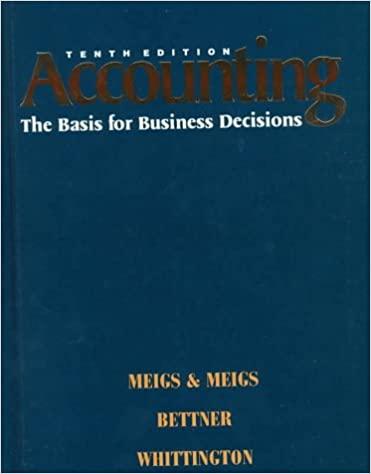The regulatory environment and financial reporting You are the training manager for TWP, a large national professional services firm that undertakes financial statement audits for
The regulatory environment and financial reporting
You are the training manager for TWP, a large national professional services firm that undertakes financial statement audits for large companies but has also recently expanded its provision of forensic accounting services. One of your key tasks is to prepare a regular internal newsletter to keep staff updated on the latest news, alerting staff of changes and developments that may impact their work, and provide enough information for staff to:
- understand the nature of the news/changes/developments and its potential impact;
- access further information on the news/changes/developments if they wish to (including website links where appropriate).
Required:
Prepare a 2-page newsletter (with 1.5 pages dedicated to auditing issues and 0.5 pages to forensic accounting issues) that identifies and summarises changes, developments, and news for the observation period from 15 July 2020 to 15 July 2021, inclusive.
Detailed guidelines for completing this task:
1. Identification of news/changes/developments
You will need to identify and consider a range of news items/developments/changes such as:
- technical issues: for example the issue of new auditing standards, amendments to auditing standards, updates on AUASB or IAASB projects in progress, advances in the technology used in forensic accounting. Any pronouncements which became effective outside of the observation period may be included only if news in relation to that pronouncement is published within the observation period.
- regulation and monitoring of auditing and forensic accounting: for example ASIC reviews on the quality of auditing.
- political influences or other potential developments. 'Political' does not only mean action from politicians it would also include lobbying/actions by other groups to promote their own interests. For example, there may be articles about companies, audit firms, or other particular interest groups saying that if certain auditing standards or expectations on auditors are introduced this will disadvantage them or have a negative impact.
The 2 page restriction on the newsletter means that you need to use judgment about what to include and how much information to include. It is not intended that you provide complete details of news/changes/developments although you may consider that more detail is needed for particular issues. Given the target audience, it would be assumed that readers have a working knowledge of common terms and so abbreviations such as AUASB, IAASB may be used.
2. Potential sources
Given the scope of the potential influences on auditing and forensic accounting, you will need to research a range of Australian and international sources. Below is a list of sources that may be of interest. Note that this list is not exhaustive, students should search for sources outside of these. Students should not rely on any one type of source, but a range of sources from each category, i.e. do not just look at websites, also check journals, newspapers, etc. Examples of possible information sources include:
(a) Websites such as those of:
- Auditing and Assurance Standards Board
- Financial Reporting Council
- Australian Securities and Investment Commission
- Australian Securities Exchange
- International Auditing and Assurance Standards Board
- Chartered Accountants Australia and New Zealand, especially the forensic accounting specialisation pages
- CPA Australia
- Websites of large accounting firms and other firms offering forensic accounting services
(b) Professional publications:
- In the Black (CPA)
- Acuity (CAANZ)
- Accounting Futures Magazine (CAANZ & ACCA)
(c) Newspapers/journals
3. Format and presentation
The following are to be observed for your newsletter preparation.
- The top of the newsletter must include the title (you need to decide what to call your newsletter) and details of the period the newsletter is considering.
- The newsletter should not read as one continuous 'essay'. It must include headings and sub-headings that assist in identifying the nature of news / changes / developments and help to guide the reader, and also enable the reader to distinguish between items of interest and the relative importance of changes.
- You must refer the reader to specific sources (include website links where appropriate by using hyperlinks) so that they are able to obtain more detailed information on the news/change/development. Given that it is only a 2-page newsletter, you are not expected to use any direct quotations in your newsletter unless it is really critical in your view. If you do so, you need to include in-text citations using the APA 7th edition.
- The newsletter must be printed in a minimum font set at 11 points (you may wish to use different formatting (such as larger fonts) for headings. Apart from minimum font size, there are no specific requirements in relation to line spacing, margins. However, you should note that simply reducing line spacings or margins to 'fit more in' may impact on the presentation and effectiveness of the newsletter and therefore impact on the marks awarded to you for presentation.
- There is no specific 'word limit' but the newsletter must be no longer than 2 pages. In cases where the newsletter exceeds the 2-page limit, only the first 2 pages will be marked.
- Do not attach actual articles/printouts of web sources etc to your assessment. You are only required to include details of these in the bibliography (see section 4 below).
Don't be afraid to be creative. The effectiveness of a newsletter is impacted by how interesting the readers find it.
Step by Step Solution
There are 3 Steps involved in it
Step: 1

See step-by-step solutions with expert insights and AI powered tools for academic success
Step: 2

Step: 3

Ace Your Homework with AI
Get the answers you need in no time with our AI-driven, step-by-step assistance
Get Started


